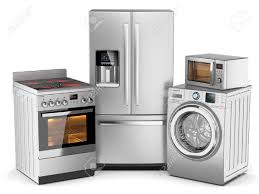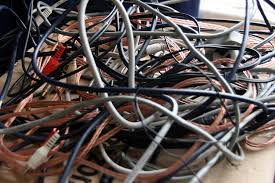"Everything Started With the Problem with High Electricity Bills" - "High Electricity Bill Problem"
5 Reasons Your Electric Bill is So High
Are you the type of person who dreads receiving your electricity bill every month? It can be daunting to maintain a budget when you’re not sure how much your utilities will cost each month. While it’s usually easy to blame your provider for hiking up rates, your bill is actually much more likely to be high because of your usage. To help you start saving money, we’ve identified a few of the culprits behind high household power usage and reminders for how to lower your rate of use.

1. Letting Vampire Appliances Bleed You Dry

One of the main reasons your electric bill may be high is that you leave your appliances or electronics plugged in whether you’re using them or not. While that might not have been such a problem years ago, most modern appliances and gadgets draw electricity when turned off. This is mostly because much of modern technology never really powers down. When you press the “Power” button on your DVR, computer, or television, it actually transitions to a standby mode so it can be turned back on faster, either for continued use or to carry out a scheduled task like recording a TV show or brewing a pot of coffee.
The problem is, these devices are sitting idle, sucking electricity out of your home while waiting for a command from you, or waiting for a scheduled task to run. Anything with a clock, such as microwave ovens and coffee makers — and even older technologies, like VCRs — need the power to keep time while turned off.
Solution:
You can start saving energy by connecting devices to power strips and turning off the power strips when you’re not using them. That way off will really mean off as you’ve effectively disconnected the device from the power source. Check out how these devices rank in terms of energy usage.
2. Feeding Energy Hog Appliances
Big appliances, like dishwashers, clothes washers, and clothes dryers have insatiable appetites for electricity, and using them too often can drive your electricity bill way up. In fact, the average American family does almost 400 loads of laundry a year and uses almost 40 gallons of water for a full load. However, many of those “loads” may not actually be using the appliance to its fullest capacity.
Solution:
For your dishwasher, make sure that you fill it to capacity before you run it, choose an appropriate wash cycle, and change the drying setting to use no or low heat. For clothes washers and dryers, try having only one laundry day each week, fill your loads to capacity and select low heat for drying

3. Misusing Lights and Ceiling Fans
When it comes to lighting, many people make the mistake of using lights to affect the brightness of an entire room, which can contribute to high electric bills. However, lighting is efficient only when used directly to provide light to specific areas of a room, such as couches, chairs, kitchen tables, and workspaces. Full room ceiling lights are much less effective than individual lamps for providing the light you need. You’ll also pay more on your electric bill if you keep lights on when nobody’s using them.
Ceiling fans only affect the temperature of the room in which they’re installed, so it doesn’t make sense to leave a ceiling fan on if nobody’s in the room. Additionally, ceiling fans have a toggle switch that allows the blades to switch direction for optimal efficiency based on the season.
Solution:
Use lighting only for specific areas that are occupied and make sure to turn off lights when those areas are no longer in use. Change out inefficient incandescent light bulbs for energy-efficient CFL bulbs to save money when the lights are on. Turn your ceiling fans off when nobody’s in the room and be sure to set the toggle switch so that the blades run counter-clockwise during the summer and clockwise during the winter to circulate air more efficiently.

4. Using Appliances Past Their Prime

Using old appliances is probably one of the bigger reasons why you’re paying more on your electric bill. The fact is old appliances simply use more energy than new energy-efficient models. That old-fashioned refrigerator or oven might be cute and trendy in your retro kitchen, but they also drive your electric bill through the roof. Even your dishwasher, washing machine, and dryer that was built in the 1990s are sucking you dry, as Energy Star didn’t begin rating those appliances until after 1997.
This one’s easy. Upgrade your appliances with new energy-efficient models. A new energy-efficient refrigerator, for example, uses about four times less electricity than an older model. You can even get a new model with a retro design to keep your kitchen trendy.
5. Device-Charging Frenzy

Look around your home at all the technology that uses chargers: cell phones, MP3 players, iPads and tablet PCs, electric razors, electric toothbrushes, laptops, portable game systems, and a whole slew of similar devices. The more tech- and gadget-oriented you are, the more likely you are to have these devices plugged in and sucking energy from your home — and the more likely you are to pay an expensive electric bill because of them.
Solution:
Unplug AC adapters and chargers from sockets when not actively charging a device, as they’ll pull electricity simply from being plugged in. Also, make sure to only charge your devices when they need it. Unnecessary charging not only costs money, but it can also shorten your gadget’s battery life.
So, the next time your electric bill sends you into a wave of budgetary panic, consider the source before calling out your energy provider. Chances are, you have a thing or two to change about your household energy consumption. You can also learn more about how to read your electric bill here.

Belum ada Komentar untuk ""Everything Started With the Problem with High Electricity Bills" - "High Electricity Bill Problem""
Posting Komentar